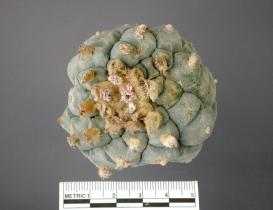According to Sasha Shulgin, Mescaline has become the “meter” for psychedelic substances, as it was the first of its kind to be approached scientifically. But how did a Mexican cactus turn into a chemically pure substance after all? In Berlin 1888, the toxicologist Louis Lewin published his first analysis of a yet unidentified cactus, which he brought with him from North America. Only later did it become clear that this was a specimen of Peyote, which indigenous people have traditionally used and worshipped as a spiritual vehicle. Testing on animals led to the identification of some alkaloids; but it took until 1897, when Arthur Heffter finally "dared" to test the cactus’ effects on himself, that “Mezcalin,” the main psychoactive ingredient responsible for “wonderful color visions,” became chemically isolated (as C11H17NO3). More than 20 years later, the chemist Ernst Späth accomplished the first fully artificial synthesis of Mescaline (Vienna, 1919), which precipitated a veritable research-boom in university clinics all over Germany and in other European countries: under the assumption that Mescaline would work as a psychotic agent that could trigger transitory psychoses, German psychiatrists tried to approach madness systematically. In order to understand how it came to this excessively restricted view of the psychedelic phenomenon, and by which means it was sustained, Ivo Gurschler wants to take a closer look at this very first encounter of a psychedelic substance with Western science.

Cactus Conservation Institute, Texas 2014.
Project
(2016-2017)
